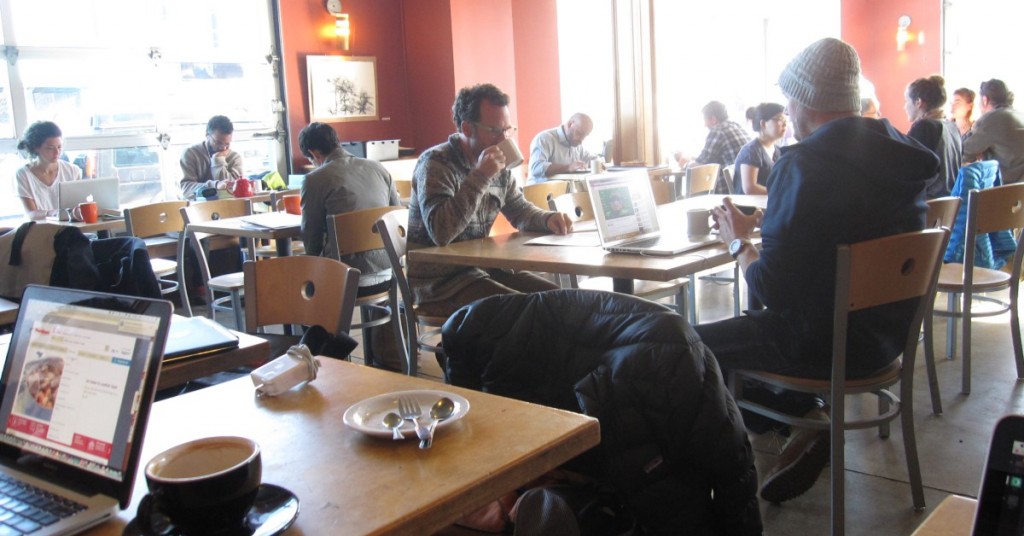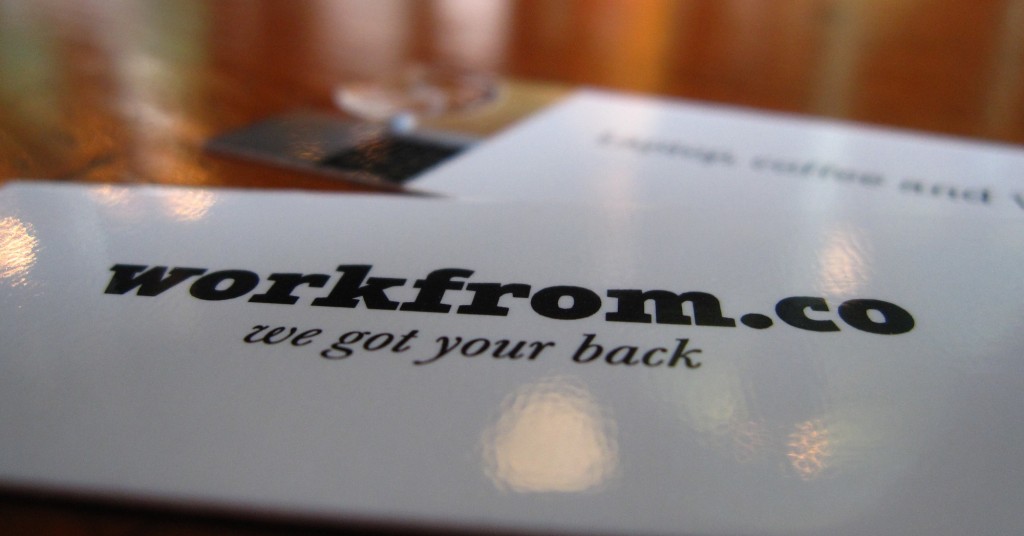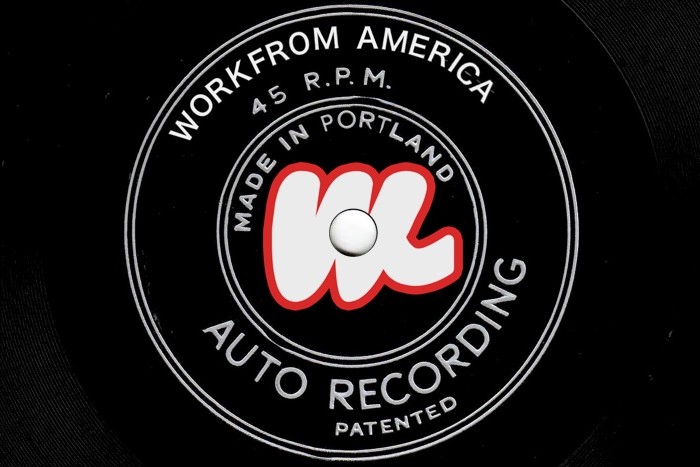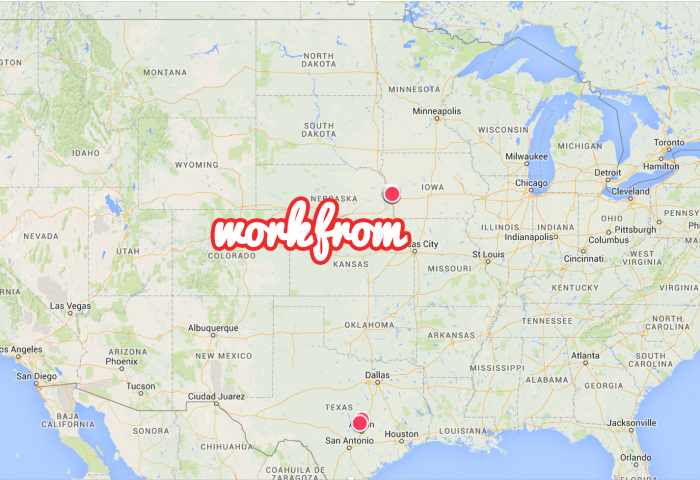Why curation is king when it comes to finding a good place to get stuff done in the wild.
Millions have shed the chains of location-based jobs, embracing a world where we live, work and play from places of our choosing.
Remote working is fast on the rise and this means there is an increasing need to find good places to work from while we roam.
Working from your sofa or kitchen table can work a few days a week, but often you need to get out of the house to stay productive. Local coffee shops, bars, restaurants and coworking spaces have become popular places to get work done for a growing number of us high-mobility workers.
While the free WiFi provided by many of the venues we frequent is certainly a valuable amenity — it’s much more than device connectivity we seek.
It’s social and environmental connections. We seek inspiration, serendipity and ad hoc moments sparking strokes of genius. It’s tough to find that in a spare bedroom or hotel room.
Here’s the thing, our creativity is piqued with the smell of fresh coffee and snacks in the air. The steady hum of conversation, espresso machines, music and general busyness can often provide the soundtrack needed to get in a good zone.
A dedicated workspace, such as a coworking space, can be the perfect spot for a whiteboard brainstorming session or conference call. The freedom to roam from place to place leads to personal happiness and increased productivity; not to mention helping to mitigate 8–10 hours of sitting in one place all day. Variety in environment, focus and social interaction in a workspace is key.
Right now, there are largely two approaches to helping people find places to get work done in the wild.
Catch-all
With this approach, the focus is move fast and cast a wide net. The net is dense and not much escapes it. The information caught isn’t very useful but it is plentiful. Large amounts of information populate the experience with a goal to show something to everyone — be everywhere someone may look. Lots of people will see data, but accuracy and specificity is low.
The data used in the catch-all approach is typically powered by a Yelp or Foursquare API, returning results for ALL places in a specific category (usually cafes, coffee shops, WiFi hotspots) regardless of the actual amenities, culture or friendliness of the venues shown.
Curation
With this approach, the focus is move slower, cast a narrow net. The net is porous and a lot escapes it. Information caught is relevant and valuable yet scarce by comparison — intentionally. The end user experience is populated with relevant, high-value information. Not everyone will see something in all areas early on, but those who do are confident in its relevancy and usefulness.
The data used in the curation approach is typically powered by personal recommendations and the collective knowledge of a remote working, highly mobile, itinerant community.

At Workfrom we’ve seen first-hand the challenges with each approach.
Challenges with Catch-all
Not a lot of signal here. Folks are given tons of choices, often leading to a hit-or-miss experience. People will see information that feels promising, yet the lack of specificity and community vetting yields skepticism. It’s hard to know if needs will be met until visiting. Valuable time is lost trying to find a good fit.
Reliance on our community to help coverage grow is very low. A switch is flipped and a firehose of low frequency noise in the form of irrelevant and disparate data is pointed at our community. Unacceptable.
Challenges with Curation
Much more signal here but less geographic utility as coverage grows to reach a critical mass. Information visible in our community is hand picked and vetted by like-minded people. People with very similar needs, desires and pain points. A brand new dataset is being born and it takes time to scale. Perceived value is challenged due to an inherently slower coverage timeline, but for those in an area of coverage — value is very high.
Reliance on our community to help coverage grow is high. There is no switch to flip. No firehose.
Good curation takes time and it’s exactly where we need to be.
The future of work is done from places far and wide. Our need to reliably locate a fitting workspace is increasing rapidly. The traditional office is all but dead. It’s being replaced with lower commitment shared spaces.
As the mobile workforce grows, so does our collective knowledge. An individual’s insight can quickly become the acumen of many in a community of like-minds.
Going forward, rich experiences trump flat ones. Maps full of pins become less important than inside information and trusted recommendations in a community. Ideas are being hatched and companies being built from these unsung incubators of the world. The independent coffee shops, restaurants, bars and cafes where so many of us find a space to get work done.
While the path of curating data aligned with the work from anywhere culture is inherently slower than repurposing existing data, the end result is a tailored experience with more value.
Venues that embrace this culture have a captive audience. Folks on the lookout for venues to patronize have a clear picture of where to spend their time AND their money.

We foster curation through community.
We couldn’t be more excited about helping to surface places all over the world for our tribe to get work done.
Our choice to curate has been clear since day one. It’s as intentional as it gets. We know it’s the right choice for us and the better experience.
We know the default well and it sucks. We’ve wasted far too much time, money and hot coffee trying to find a reliable spot to do good work.
We rely heavily on recommendations from experienced cohorts. And that’s awesome.
The spaces recommended in our community are where people work from by choice — not by default. And that’s awesome too.
Our community rocks. They’ve got our backs and we’ve got theirs. We’d love to welcome you if you haven’t joined all this fun already!



Responses